 Search by Keyword
|
“HOLD ME TIGHT”
(John Lennon / Paul McCartney)
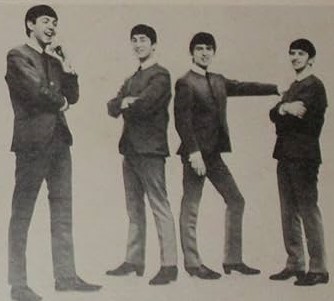 Nine times during The Beatles studio career they recorded what they thought were finished songs, only to completely remake them at a later date, which in effect created two complete versions of the same songs. This, of course, should not be confused with multiple takes of songs as they were recording them, or songs that were changing shape or style during the recording process. These nine times were unique in that when they went home at the end of the day, they thought they had a finished song, but later decided to scrap the whole recording and start from scratch later. Nine times during The Beatles studio career they recorded what they thought were finished songs, only to completely remake them at a later date, which in effect created two complete versions of the same songs. This, of course, should not be confused with multiple takes of songs as they were recording them, or songs that were changing shape or style during the recording process. These nine times were unique in that when they went home at the end of the day, they thought they had a finished song, but later decided to scrap the whole recording and start from scratch later.
 In almost all of these instances, we are now able to hear both versions, such as with “Norwegian Wood,” “Love Me Do,” “Revolution,” “I’m Looking Through You” and “Strawberry Fields Forever.” This situation, made possible mostly by the Anthology series of albums, provides an interesting insight into their recording process, as well as into The Beatles' mindset in the studio. In almost all of these instances, we are now able to hear both versions, such as with “Norwegian Wood,” “Love Me Do,” “Revolution,” “I’m Looking Through You” and “Strawberry Fields Forever.” This situation, made possible mostly by the Anthology series of albums, provides an interesting insight into their recording process, as well as into The Beatles' mindset in the studio.
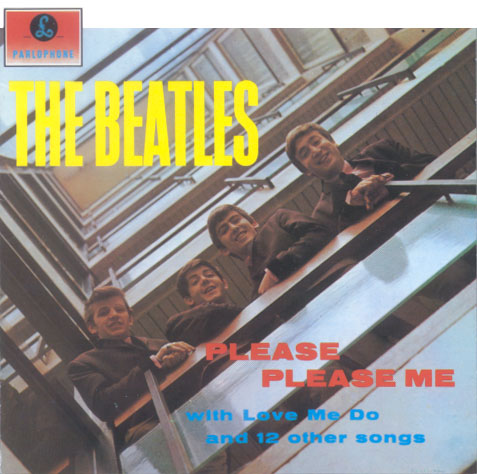 There is only one instance in the history of The Beatles' recording career that we can’t hear both versions of a song that The Beatles recorded. “Hold Me Tight,” an original Lennon and McCartney "beat" song, was recorded and completed for their first British album “Please Please Me” on February 11th, 1963 along with the rest of the album. Every intention was to release this song on that album. However, all of the evidence available verifies that the tape containing this recording has been lost, recorded over or destroyed. For whatever reason, this version no longer exists. There is only one instance in the history of The Beatles' recording career that we can’t hear both versions of a song that The Beatles recorded. “Hold Me Tight,” an original Lennon and McCartney "beat" song, was recorded and completed for their first British album “Please Please Me” on February 11th, 1963 along with the rest of the album. Every intention was to release this song on that album. However, all of the evidence available verifies that the tape containing this recording has been lost, recorded over or destroyed. For whatever reason, this version no longer exists.
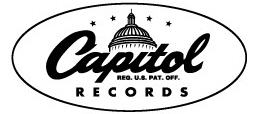 Fortunately for us, the song "Hold Me Tight" was completely re-recorded on September 12th, 1963 for their second British album “With The Beatles” and debuted in America on the Capitol album “Meet The Beatles!” We will probably never know how that first version of the song really sounded, although lost master tapes have been known to mysteriously reappear at a later time. However, an analysis of the released version will prove invaluable for the Beatles enthusiast of today. Fortunately for us, the song "Hold Me Tight" was completely re-recorded on September 12th, 1963 for their second British album “With The Beatles” and debuted in America on the Capitol album “Meet The Beatles!” We will probably never know how that first version of the song really sounded, although lost master tapes have been known to mysteriously reappear at a later time. However, an analysis of the released version will prove invaluable for the Beatles enthusiast of today.
 Paul McCartney's Forthlin Road home
|
Songwriting History
 Number 20, Forthlin Road, Allerton, was the home of the McCartney family from 1955 to 1964. Paul McCartney and John Lennon would frequently skip school and meet back at Paul’s Forthlin Road home to write songs while the rest of the family were away. While Paul had written the bulk of "Hold Me Tight" sometime in 1961 (evidenced by the song being included in some Beatles performances that year), it was here at Paul's Forthlin Road home, shortly after their September 11th, 1962 recording session that produced "Love Me Do" and "P.S. I Love You," that Paul and John collaborated in finishing up the writing of “Hold Me Tight” as a possible future ‘hit’ single. Described as “a McCartney number” by most sources, Paul insists that it was a collaborative effort, although he did compose the bulk of the song beforehand. Number 20, Forthlin Road, Allerton, was the home of the McCartney family from 1955 to 1964. Paul McCartney and John Lennon would frequently skip school and meet back at Paul’s Forthlin Road home to write songs while the rest of the family were away. While Paul had written the bulk of "Hold Me Tight" sometime in 1961 (evidenced by the song being included in some Beatles performances that year), it was here at Paul's Forthlin Road home, shortly after their September 11th, 1962 recording session that produced "Love Me Do" and "P.S. I Love You," that Paul and John collaborated in finishing up the writing of “Hold Me Tight” as a possible future ‘hit’ single. Described as “a McCartney number” by most sources, Paul insists that it was a collaborative effort, although he did compose the bulk of the song beforehand.
 “When we first started it was all singles and we were always trying to write singles,” McCartney stated in his book "Many Years From Now," continuing “That's why you get lots of these two minute 30 second songs; they all came out the same length. ’Hold Me Tight’ was a failed attempt at a single which then became an acceptable album filler.” In an interview with author Mark Lewisohn in 1988 for his book "The Beatles Recording Sessions," Paul stated: "I can't remember much about that one. Certain songs were just 'work' songs, you haven't got much memory of them. That's one of them." Lennon concurred, stating to author David Sheff in 1980, "That was Paul's. Maybe I stuck some bits in there, I don't remember. It was a pretty poor song and I was never really interested in it either way." “When we first started it was all singles and we were always trying to write singles,” McCartney stated in his book "Many Years From Now," continuing “That's why you get lots of these two minute 30 second songs; they all came out the same length. ’Hold Me Tight’ was a failed attempt at a single which then became an acceptable album filler.” In an interview with author Mark Lewisohn in 1988 for his book "The Beatles Recording Sessions," Paul stated: "I can't remember much about that one. Certain songs were just 'work' songs, you haven't got much memory of them. That's one of them." Lennon concurred, stating to author David Sheff in 1980, "That was Paul's. Maybe I stuck some bits in there, I don't remember. It was a pretty poor song and I was never really interested in it either way."
 Regardless of their dismissal of the song in later interviews, they obviously put a lot of work into it during the writing process. McCartney described the song as "a bit Shirelles," indicating that it was influenced by the work of one of their favorite female groups of the time, The Shirelles. The Beatles had a particular fondness for the "girl groups" of the early '60s, The Shirelles being the first all-girl group to make the #1 spot on the American Billboard Hot 100. Among The Shirelles songs that The Beatles performed in the early '60s, both “Baby It’s You” and “Boys” were recorded for their first British album "Please Please Me." “P.S. I Love You” was said to be inspired primarily by The Shirelles' #1 US hit "Soldier Boy" (#23 in the UK). Regardless of their dismissal of the song in later interviews, they obviously put a lot of work into it during the writing process. McCartney described the song as "a bit Shirelles," indicating that it was influenced by the work of one of their favorite female groups of the time, The Shirelles. The Beatles had a particular fondness for the "girl groups" of the early '60s, The Shirelles being the first all-girl group to make the #1 spot on the American Billboard Hot 100. Among The Shirelles songs that The Beatles performed in the early '60s, both “Baby It’s You” and “Boys” were recorded for their first British album "Please Please Me." “P.S. I Love You” was said to be inspired primarily by The Shirelles' #1 US hit "Soldier Boy" (#23 in the UK).
 Another seemingly obvious inspiration for “Hold Me Tight” is the Carl Perkins classic “Sure To Fall,” which The Beatles performed regularly, even including it in their BBC radio shows. This song contains the line “so hold me tight, let tonight be the night, darling, don’t ever let me go.” Since Carl Perkins had such an unmistakable influence on The Beatles as a whole, it is not out of line to suggest this song’s lyrics being an inspiration for “Hold Me Tight.” Another seemingly obvious inspiration for “Hold Me Tight” is the Carl Perkins classic “Sure To Fall,” which The Beatles performed regularly, even including it in their BBC radio shows. This song contains the line “so hold me tight, let tonight be the night, darling, don’t ever let me go.” Since Carl Perkins had such an unmistakable influence on The Beatles as a whole, it is not out of line to suggest this song’s lyrics being an inspiration for “Hold Me Tight.”
Recording History
 As indicated earlier, “Hold Me Tight” was one of five original Lennon / McCartney compositions recorded during their marathon recording session on February 11th, 1963 to complete their first British album “Please Please Me.” Since they were determined to achieve success by recording their own compositions, like their musical heroes Buddy Holly, Chuck Berry and Carl Perkins, they set out to record as many of their original songs as possible. Six other songs were started and completed during this full day at EMI Studio Two, making a total of eleven songs in one day. As indicated earlier, “Hold Me Tight” was one of five original Lennon / McCartney compositions recorded during their marathon recording session on February 11th, 1963 to complete their first British album “Please Please Me.” Since they were determined to achieve success by recording their own compositions, like their musical heroes Buddy Holly, Chuck Berry and Carl Perkins, they set out to record as many of their original songs as possible. Six other songs were started and completed during this full day at EMI Studio Two, making a total of eleven songs in one day.
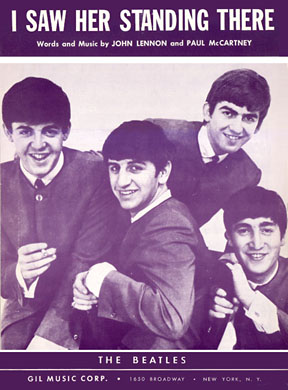 The evening session that stretched from 7:30 to 10:45 pm started off with this song. Since 13 takes were performed, it can be estimated that a full hour was devoted to it, from 7:30 to 8:30 pm. Of those 13 takes, only two were complete versions. Five of the attempts were false starts, one is described as a “breakdown” because of an unexplained “error,” and four were takes of an edit piece. The intention was to edit "take nine" (one of the complete live versions) with "take 13" (the best attempt at the edit piece) in order to create a master version of the song. Other songs recorded on this day received similar treatment, such as the edit of “I Saw Her Standing There.” The evening session that stretched from 7:30 to 10:45 pm started off with this song. Since 13 takes were performed, it can be estimated that a full hour was devoted to it, from 7:30 to 8:30 pm. Of those 13 takes, only two were complete versions. Five of the attempts were false starts, one is described as a “breakdown” because of an unexplained “error,” and four were takes of an edit piece. The intention was to edit "take nine" (one of the complete live versions) with "take 13" (the best attempt at the edit piece) in order to create a master version of the song. Other songs recorded on this day received similar treatment, such as the edit of “I Saw Her Standing There.”
 In this case, though, the 14 song requirement for a standard British album was filled without “Hold Me Tight” and, possibly to save the trouble of editing on a tight budget, this song became the 15th song that wasn’t needed. (The a- and b-sides of their first two singles, including "Please Please Me," filled the other tracks on the album.) At this point in the game, the budget allocated for an upcoming new group was minimal; hence the one day rushed schedule for recording an album. Whatever the reason may have been, “Hold Me Tight” was deemed the weakest track and didn’t make the album. In this case, though, the 14 song requirement for a standard British album was filled without “Hold Me Tight” and, possibly to save the trouble of editing on a tight budget, this song became the 15th song that wasn’t needed. (The a- and b-sides of their first two singles, including "Please Please Me," filled the other tracks on the album.) At this point in the game, the budget allocated for an upcoming new group was minimal; hence the one day rushed schedule for recording an album. Whatever the reason may have been, “Hold Me Tight” was deemed the weakest track and didn’t make the album.
 Fortunately, The Beatles were not going to let this one fall through the cracks. When pressed for new material for their second British album seven months later, they remembered that “Hold Me Tight” wasn’t yet released and proceeded to resurrect it. But, instead of bringing out the old tape, a decision was made to start it again fresh. The reason may have been that the original tape was recorded over or already scrapped. In any event, on September 12th, 1963, their fourth recording session for the album, the song was begun anew. Fortunately, The Beatles were not going to let this one fall through the cracks. When pressed for new material for their second British album seven months later, they remembered that “Hold Me Tight” wasn’t yet released and proceeded to resurrect it. But, instead of bringing out the old tape, a decision was made to start it again fresh. The reason may have been that the original tape was recorded over or already scrapped. In any event, on September 12th, 1963, their fourth recording session for the album, the song was begun anew.
 The first of their two sessions at EMI Studio Two on this day, spanning from 2:30 to 6:30 pm, started with recording four special messages for broadcast on Australian radio for the promotion of their upcoming concert tour. Afterwards, at approximately 4 pm, work began on the remake of “Hold Me Tight.” They started the takes at the round number of “take 20” to compensate for the previous 13 takes they recorded of the song on February 11th, 1963 and their probably not remembering how many takes they had made of that first version. The first of their two sessions at EMI Studio Two on this day, spanning from 2:30 to 6:30 pm, started with recording four special messages for broadcast on Australian radio for the promotion of their upcoming concert tour. Afterwards, at approximately 4 pm, work began on the remake of “Hold Me Tight.” They started the takes at the round number of “take 20” to compensate for the previous 13 takes they recorded of the song on February 11th, 1963 and their probably not remembering how many takes they had made of that first version.
 Ten takes were needed to complete the song on this day. Before the first attempt, however, Paul gave Ringo some instruction on how to play the song's introduction. "No, you just keep, you just keep the ordinary beat," he told Ringo, adding, "and try and do a couple fill-ins, just the off-beat...oh yeah, just try the beginning...just go." "Take 20" is then announced, this first attempt being called to a halt by Paul who told Ringo, "It's a bit much, it's like 'Running Bear'...just do it on your snare or something." Ten takes were needed to complete the song on this day. Before the first attempt, however, Paul gave Ringo some instruction on how to play the song's introduction. "No, you just keep, you just keep the ordinary beat," he told Ringo, adding, "and try and do a couple fill-ins, just the off-beat...oh yeah, just try the beginning...just go." "Take 20" is then announced, this first attempt being called to a halt by Paul who told Ringo, "It's a bit much, it's like 'Running Bear'...just do it on your snare or something."
 The tape then contains a snippet of another attempt at the introduction with Ringo concentrating on the snare drum, this apparently being scrapped as well. After "take 20" is announced again, the group give the song another go, an obvious decision being made for Ringo to just play a standard drum beat for the intro instead of any drum fills. However, this attempt becomes another false start as well because of Paul's flubbed lead vocal. He sings, "Let me, I'm the o...Hang on, let me get it...forgot the words." "Take 21" is a complete run-through of the song that was only flawed by an awkward drum fill just before the two-minute mark. The tape then contains a snippet of another attempt at the introduction with Ringo concentrating on the snare drum, this apparently being scrapped as well. After "take 20" is announced again, the group give the song another go, an obvious decision being made for Ringo to just play a standard drum beat for the intro instead of any drum fills. However, this attempt becomes another false start as well because of Paul's flubbed lead vocal. He sings, "Let me, I'm the o...Hang on, let me get it...forgot the words." "Take 21" is a complete run-through of the song that was only flawed by an awkward drum fill just before the two-minute mark.
 The next take, which was mistakenly called out by engineer Norman Smith as "take 23," was a complete version that included not only full lead vocals from Paul but also the answering backing vocals from John and George at the end of each verse. This take was deemed unsuitable, however, because of flaws in John and George's backing vocals and Ringo forgetting the alter his drumming in the second bridge (or "middle eight," as The Beatles habitually referred to them). The next take, which was mistakenly called out by engineer Norman Smith as "take 23," was a complete version that included not only full lead vocals from Paul but also the answering backing vocals from John and George at the end of each verse. This take was deemed unsuitable, however, because of flaws in John and George's backing vocals and Ringo forgetting the alter his drumming in the second bridge (or "middle eight," as The Beatles habitually referred to them).
 "There's just two middle eights" Harrison is heard stating before "take 22" begins, this take breaking down after John comes in late with his backing vocals in the first verse. After "take 22" ends, George Martin discusses with John exactly when the backing vocals should begin. Norman Smith has to call in what was the actual "take 23" twice because of the group having to work out some vocal details. Just after this take starts, however, Paul once again flubs the lyrics by singing "Let me o...OH BLOODY HELL!" After Norman Smith angrily screams "TWENTY FOUR!" to signal "take 24," The Beatles launch into the rendition that eventually became the keeper. "There's just two middle eights" Harrison is heard stating before "take 22" begins, this take breaking down after John comes in late with his backing vocals in the first verse. After "take 22" ends, George Martin discusses with John exactly when the backing vocals should begin. Norman Smith has to call in what was the actual "take 23" twice because of the group having to work out some vocal details. Just after this take starts, however, Paul once again flubs the lyrics by singing "Let me o...OH BLOODY HELL!" After Norman Smith angrily screams "TWENTY FOUR!" to signal "take 24," The Beatles launch into the rendition that eventually became the keeper.
 It was now time for overdubs, so while the two-track tape of "take 24" was being re-recorded onto another two-track machine, they simultaneously overdubbed handclaps and additional background vocals. "Take 25" broke down right away but "take 26" made it all the way through to the end. However, vocal flaws as well as handclapping mistakes as the song slows down at the conclusion meant that they had to continue work on this overdub. It was now time for overdubs, so while the two-track tape of "take 24" was being re-recorded onto another two-track machine, they simultaneously overdubbed handclaps and additional background vocals. "Take 25" broke down right away but "take 26" made it all the way through to the end. However, vocal flaws as well as handclapping mistakes as the song slows down at the conclusion meant that they had to continue work on this overdub.
 "Stand by lads, 27 track two," Norman Smith calls out to signal the next overdub attempt, indicating that their handclaping and background vocal overdub was being captured onto track two of the two track tape. However, they failed to come in on time with the handclaps for this attempt. "Take 28" made it into the third verse before backing vocal mistakes appeared, thus calling this overdub take to a halt. "Take 29" made it all the way to the end of the song once again, this time with the handclapping slowing down appropriately at the song's conclusion. "Stand by lads, 27 track two," Norman Smith calls out to signal the next overdub attempt, indicating that their handclaping and background vocal overdub was being captured onto track two of the two track tape. However, they failed to come in on time with the handclaps for this attempt. "Take 28" made it into the third verse before backing vocal mistakes appeared, thus calling this overdub take to a halt. "Take 29" made it all the way to the end of the song once again, this time with the handclapping slowing down appropriately at the song's conclusion.
 Since Mark Lewisohn's book "The Beatles Recording Sessions" stipulates that this completed song was an edit of "take 26" and "take 29" and a sudden change in volume is slightly detected just before the ritardando in the closing seconds, the concluding segment of "take 29" was undoubtedly used as an edit piece to "take 26" to perfect the song's conclusion. This editing by George Martin with the help of engineers Norman Smith and Geoff Emerick took place on September 30th, 1963 in the control room of EMI Studio Two. The first mono mix of the song was also made during this day, though apparently not deemed suitable for release. Since Mark Lewisohn's book "The Beatles Recording Sessions" stipulates that this completed song was an edit of "take 26" and "take 29" and a sudden change in volume is slightly detected just before the ritardando in the closing seconds, the concluding segment of "take 29" was undoubtedly used as an edit piece to "take 26" to perfect the song's conclusion. This editing by George Martin with the help of engineers Norman Smith and Geoff Emerick took place on September 30th, 1963 in the control room of EMI Studio Two. The first mono mix of the song was also made during this day, though apparently not deemed suitable for release.
 A second mono mix of the song was made on October 23rd, 1963 also by George Martin and Norman Smith, this being the official mono mix used for the British "With The Beatles" album. The stereo mix of the song was made on October 29th, 1963 by George Martin, Norman Smith, Geoff Emerick and the mysterious B.T. A second mono mix of the song was made on October 23rd, 1963 also by George Martin and Norman Smith, this being the official mono mix used for the British "With The Beatles" album. The stereo mix of the song was made on October 29th, 1963 by George Martin, Norman Smith, Geoff Emerick and the mysterious B.T.
 Although official documents do not mention it, the song was speeded up from the original recording, which elevated the key signature from E major to F major. This is sometimes done to create a tighter performance and has been done to good effect at different times throughout The Beatles recording career, as well as slowing down the tape in the cases of “Rain” and “Strawberry Fields Forever” for a completely different effect. In the case of “Hold Me Tight,” it can be assumed that the song was speeded up during the mastering process or when tape copies were made since, according to Geoff Emerick, the process of "vari-speeding wasn't available at EMI until 1966. Although official documents do not mention it, the song was speeded up from the original recording, which elevated the key signature from E major to F major. This is sometimes done to create a tighter performance and has been done to good effect at different times throughout The Beatles recording career, as well as slowing down the tape in the cases of “Rain” and “Strawberry Fields Forever” for a completely different effect. In the case of “Hold Me Tight,” it can be assumed that the song was speeded up during the mastering process or when tape copies were made since, according to Geoff Emerick, the process of "vari-speeding wasn't available at EMI until 1966.
Song Structure and Style
 Although some could argue that this song contains a “chorus,” which was a rare occurrence at this early stage in the Lennon / McCartney songwriting career, what we actually are hearing is the second half of the verse. Therefore, the structure of “Hold Me Tight” falls in the usual category of 'verse/ verse/ bridge/ verse' (or aaba). However, there are a good many nuances that occur within the structure detailed here as we will examine. The song's bridge and last verse are repeated, as with many Beatles songs, but no solo is heard in the song. Although some could argue that this song contains a “chorus,” which was a rare occurrence at this early stage in the Lennon / McCartney songwriting career, what we actually are hearing is the second half of the verse. Therefore, the structure of “Hold Me Tight” falls in the usual category of 'verse/ verse/ bridge/ verse' (or aaba). However, there are a good many nuances that occur within the structure detailed here as we will examine. The song's bridge and last verse are repeated, as with many Beatles songs, but no solo is heard in the song.
 We start off with a quick two-measure introduction, which sounds to many ears as if we’re entering into a song already in progress. This is not the case, as this and the other takes of the song begin at this point, so The Beatles intended the song to start this way. Already we feel the high energy intensity of the song, with Harrison’s ostinato guitar phrase and handclapping right from the get-go. Since we hear the lyrical introduction to the song with the words “it feels so right now,” we can deduce that this introduction is actually a reference to the end of the bridge, so we will hear this introductory lyric twice more in the song when both bridges are played. We start off with a quick two-measure introduction, which sounds to many ears as if we’re entering into a song already in progress. This is not the case, as this and the other takes of the song begin at this point, so The Beatles intended the song to start this way. Already we feel the high energy intensity of the song, with Harrison’s ostinato guitar phrase and handclapping right from the get-go. Since we hear the lyrical introduction to the song with the words “it feels so right now,” we can deduce that this introduction is actually a reference to the end of the bridge, so we will hear this introductory lyric twice more in the song when both bridges are played.
 Each verse is, for all intents and purposes, 16 measures long, but we will see a subtle trick being utilized in the second and third verses. The first verse, though, is a full 16 measures that are energetically performed highlighting McCartney’s lead vocal and proficient harmonies from Lennon and Harrison which were both performed live and overdubbed - the first half of every verse containing overdubbed harmony vocals, while the second half sung live during the original performance. The second half of the verse, which drives home the title of the song, displays a "call and response" vocal style which occurs often in The Beatles catalog. The rising and falling tension of the second half of the verse acts as the primary hook of the song, ending with the anticipated climax of the melodic high note, in the 13th measure on the word “you.” Each verse is, for all intents and purposes, 16 measures long, but we will see a subtle trick being utilized in the second and third verses. The first verse, though, is a full 16 measures that are energetically performed highlighting McCartney’s lead vocal and proficient harmonies from Lennon and Harrison which were both performed live and overdubbed - the first half of every verse containing overdubbed harmony vocals, while the second half sung live during the original performance. The second half of the verse, which drives home the title of the song, displays a "call and response" vocal style which occurs often in The Beatles catalog. The rising and falling tension of the second half of the verse acts as the primary hook of the song, ending with the anticipated climax of the melodic high note, in the 13th measure on the word “you.”
 This word “you” becomes a pivotal feature of the song as we witness at the end of the second verse. This verse is nearly identical to the first verse with the exception of a couple lyric phrases, although its ending is somewhat tricky. What would be the 16th measure of the second verse actually becomes the first measure of the eight-measure bridge, the word “you” connecting the second verse with the bridge. The last lyrical phrase of the verse is “it’s you” while the first lyrical phrase of the bridge is “you don’t know what it means to hold you tight.” So, although the song is fully symmetrical, the second and third verses each share a measure with their bridge, as well as the word “you.” This word “you” becomes a pivotal feature of the song as we witness at the end of the second verse. This verse is nearly identical to the first verse with the exception of a couple lyric phrases, although its ending is somewhat tricky. What would be the 16th measure of the second verse actually becomes the first measure of the eight-measure bridge, the word “you” connecting the second verse with the bridge. The last lyrical phrase of the verse is “it’s you” while the first lyrical phrase of the bridge is “you don’t know what it means to hold you tight.” So, although the song is fully symmetrical, the second and third verses each share a measure with their bridge, as well as the word “you.”
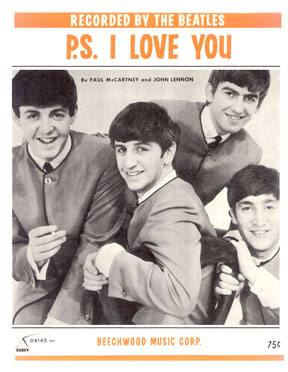 To further show the complexity of the song, the bridge dips the song into a minor key while the rest of the song is major. Since the writing of this song pre-dates “P.S. I Love You,” which also combines major and minor chords, this shows the grasp that Lennon and McCartney had on songwriting structure even in their formative years. The end of the first verse ends in the transitional major C chord, while the second and third verses end by introducing the minor sounding A flat chord, which is heard in the shared measure connecting the second verse with the bridge. To further show the complexity of the song, the bridge dips the song into a minor key while the rest of the song is major. Since the writing of this song pre-dates “P.S. I Love You,” which also combines major and minor chords, this shows the grasp that Lennon and McCartney had on songwriting structure even in their formative years. The end of the first verse ends in the transitional major C chord, while the second and third verses end by introducing the minor sounding A flat chord, which is heard in the shared measure connecting the second verse with the bridge.
 The bridge is therefore eight measures long and features McCartney singing alone except for the final measure. This adds a nice variation to the structure which relieves the tension created in the first two verses. The final lyrical phrase of the bridge, “it feels so right,” was what we heard in the introduction of the song, which reveals to us the rightful location of that phrase; we now realize that it is actually a transitional part of the bridge that we received an early glimpse of in the introduction. The bridge is therefore eight measures long and features McCartney singing alone except for the final measure. This adds a nice variation to the structure which relieves the tension created in the first two verses. The final lyrical phrase of the bridge, “it feels so right,” was what we heard in the introduction of the song, which reveals to us the rightful location of that phrase; we now realize that it is actually a transitional part of the bridge that we received an early glimpse of in the introduction.
 After a third verse, which is only slightly altered lyrically, we then enter into an identical repeat of the bridge and third verse. After this final verse, we hear what appears to be the beginning of another bridge, but what actually occurs is a ritardando which makes the song grind to a halt. This final section of the song, the "outro" if you will, is four measures long including the shared final measure of the last verse. So, with the shared measure between the verses and bridges and the ritardando at the close of the song, we see that The Beatles have some pretty nifty songwriting and performance tricks up their sleeves. Not bad for a song that most reference works dismiss as “disastrous” and “below par.” After a third verse, which is only slightly altered lyrically, we then enter into an identical repeat of the bridge and third verse. After this final verse, we hear what appears to be the beginning of another bridge, but what actually occurs is a ritardando which makes the song grind to a halt. This final section of the song, the "outro" if you will, is four measures long including the shared final measure of the last verse. So, with the shared measure between the verses and bridges and the ritardando at the close of the song, we see that The Beatles have some pretty nifty songwriting and performance tricks up their sleeves. Not bad for a song that most reference works dismiss as “disastrous” and “below par.”
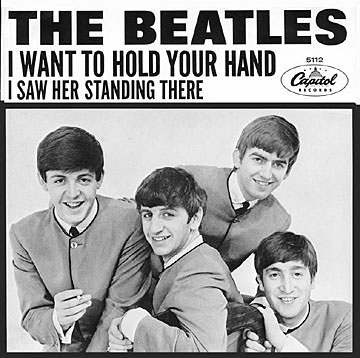 The song has also taken a lot of flack throughout the years because of the lyrics, which have been considered especially pedestrian and cliché heavy. While this is definitely true, it isn’t any less complex than many Beatles songs written up to that point, “I Want To Hold Your Hand” being a prime example. The lyrics are a simple plea from the singer to ‘hold him tight’ and thereby explaining what it would mean to him. No consideration is given to the feelings of the girl in question, which is standard for McCartney lyrics at the time. The song has also taken a lot of flack throughout the years because of the lyrics, which have been considered especially pedestrian and cliché heavy. While this is definitely true, it isn’t any less complex than many Beatles songs written up to that point, “I Want To Hold Your Hand” being a prime example. The lyrics are a simple plea from the singer to ‘hold him tight’ and thereby explaining what it would mean to him. No consideration is given to the feelings of the girl in question, which is standard for McCartney lyrics at the time.
 This song has been called "explicit" by many, simply by its inclusion of the phrase “making love,” which was risqué for 1964. It passed by the censors probably because it wasn’t released as a single and didn’t get very much radio airplay anywhere. Van Morrison, for example, didn’t get past these censors in 1967 when he sang about “making love in the green grass” with his “Brown Eyed Girl.” This song had to be treated to the editing scissors to make it to American AM radio, just as “Hold Me Tight” probably would have been if presented for airplay. This song has been called "explicit" by many, simply by its inclusion of the phrase “making love,” which was risqué for 1964. It passed by the censors probably because it wasn’t released as a single and didn’t get very much radio airplay anywhere. Van Morrison, for example, didn’t get past these censors in 1967 when he sang about “making love in the green grass” with his “Brown Eyed Girl.” This song had to be treated to the editing scissors to make it to American AM radio, just as “Hold Me Tight” probably would have been if presented for airplay.
 Performance wise, the tip of the hat goes primarily to George Harrison for his ostinato guitar phrases that snake through the entire song, negotiating every chord change without hardly missing a beat. Knowing that his guitar part was recorded live while singing background vocals during the full band rhythm track shows the professionalism George brought to the table within The Beatles. Note also how he continues to perform the guitar phrases through the ritardando at the end of the song, never losing the decreasing tempo. An excellent performance! Performance wise, the tip of the hat goes primarily to George Harrison for his ostinato guitar phrases that snake through the entire song, negotiating every chord change without hardly missing a beat. Knowing that his guitar part was recorded live while singing background vocals during the full band rhythm track shows the professionalism George brought to the table within The Beatles. Note also how he continues to perform the guitar phrases through the ritardando at the end of the song, never losing the decreasing tempo. An excellent performance!
 McCartney is next to be commended for his bass work which mimics George’s guitar phrases, although it is so low in the mix as to be hardly discernable, as with many of the tracks on this album. That Paul performed this while belting out his lead vocals during the live rhythm track is truly an accomplishment. While many are quick to point out the stray off-key notes that appear at times in his lead vocals, what can be said is that the listener is getting a true taste of the live Beatles in this song, warts and all. The vocals are not double-tracked as many of the songs on this album are, so there is nothing manufactured about this cut. McCartney is next to be commended for his bass work which mimics George’s guitar phrases, although it is so low in the mix as to be hardly discernable, as with many of the tracks on this album. That Paul performed this while belting out his lead vocals during the live rhythm track is truly an accomplishment. While many are quick to point out the stray off-key notes that appear at times in his lead vocals, what can be said is that the listener is getting a true taste of the live Beatles in this song, warts and all. The vocals are not double-tracked as many of the songs on this album are, so there is nothing manufactured about this cut.
 Ringo does quite well in effectively displaying the effervescent "beat" style of the band's early Cavern years, once again complimenting the end of each bridge with his uniquely awkward drum fills. Note also his switch to riding on his toms for the bridge to compliment the minor key change, adding a nice variation to the arrangement. Lennon’s rhythm guitar is faintly heard in the mix until the bridge, where we distinctly hear him strum each chord change on the one beat of each measure (although he does miss a couple here and there). This rhythm guitar arrangement for the bridge is heard periodically in The Beatles catalog, such as with “I Should Have Known Better.” John does quite well with his background harmonies although, as he’s personally admitted, they have never been his strong suit. Ringo does quite well in effectively displaying the effervescent "beat" style of the band's early Cavern years, once again complimenting the end of each bridge with his uniquely awkward drum fills. Note also his switch to riding on his toms for the bridge to compliment the minor key change, adding a nice variation to the arrangement. Lennon’s rhythm guitar is faintly heard in the mix until the bridge, where we distinctly hear him strum each chord change on the one beat of each measure (although he does miss a couple here and there). This rhythm guitar arrangement for the bridge is heard periodically in The Beatles catalog, such as with “I Should Have Known Better.” John does quite well with his background harmonies although, as he’s personally admitted, they have never been his strong suit.
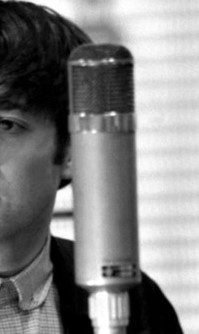 Curiously, concerning the overdubbed background vocals, all three times the phrase “it feels so right” occurs in the song, the background vocals follow this with the word “so” while Paul’s lead vocal sings “now.” Opinions differ as to whether this was a mistake made an unbelievable three times or an intentional experiment. For those who look for flaws, there are many to be found in “Hold Me Tight” as well as a lot of other Beatles songs. For those who just like to enjoy the music, like myself, these flaws are minimal in significance aside from showing the human element in full force. Curiously, concerning the overdubbed background vocals, all three times the phrase “it feels so right” occurs in the song, the background vocals follow this with the word “so” while Paul’s lead vocal sings “now.” Opinions differ as to whether this was a mistake made an unbelievable three times or an intentional experiment. For those who look for flaws, there are many to be found in “Hold Me Tight” as well as a lot of other Beatles songs. For those who just like to enjoy the music, like myself, these flaws are minimal in significance aside from showing the human element in full force.
 Capitol's "Meet The Beatles" album
|
American Releases
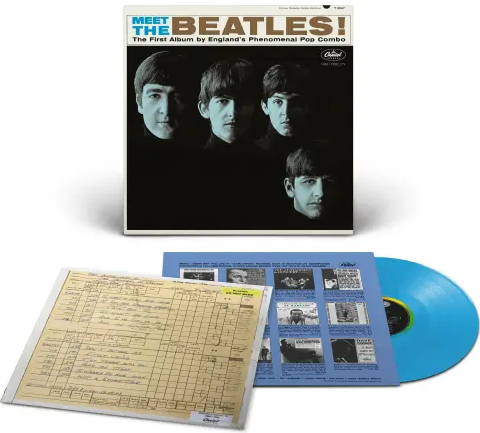 The first US release of “Hold Me Tight” was on the album “Meet The Beatles!,” the first official Capitol album which released on January 20th, 1964. Incidentally, mono copies of this album contained a "Type B" foldover mix of the song created by Capitol Records that combined both channels of the stereo mix into one instead of the legitimate mono mix originally created by George Martin. This album was finally released on an individual compact disc on January 21st, 2014, both the mono and stereo mixes being contained on a single CD. A mono edition of the album on opaque blue vinyl was then released on November 22nd, 2024 for sale exclusively at Target stores. "Hold Me Tight" has never appeared on any compilation album, single or EP. The first US release of “Hold Me Tight” was on the album “Meet The Beatles!,” the first official Capitol album which released on January 20th, 1964. Incidentally, mono copies of this album contained a "Type B" foldover mix of the song created by Capitol Records that combined both channels of the stereo mix into one instead of the legitimate mono mix originally created by George Martin. This album was finally released on an individual compact disc on January 21st, 2014, both the mono and stereo mixes being contained on a single CD. A mono edition of the album on opaque blue vinyl was then released on November 22nd, 2024 for sale exclusively at Target stores. "Hold Me Tight" has never appeared on any compilation album, single or EP.
 Sometime in 1967, Capitol released Beatles music on a new but short-lived format called "Playtapes." These tape cartridges did not have the capability to include entire albums, so two truncated four-song versions of "Meet The Beatles!" were released in the portable format, "Hold Me Tight" being on one of these releases. These "Playtapes" are highly collectable today. Sometime in 1967, Capitol released Beatles music on a new but short-lived format called "Playtapes." These tape cartridges did not have the capability to include entire albums, so two truncated four-song versions of "Meet The Beatles!" were released in the portable format, "Hold Me Tight" being on one of these releases. These "Playtapes" are highly collectable today.
 The first time the original UK "With The Beatles" album was made available in the US was the "Original Master Recording" vinyl edition released via Mobile Fidelity Sound Lab in January of 1987. This album included "Hold Me Tight" and was created utilizing half-speed mastering technology from the original master tape on loan from EMI. This release had a limited production, reportedly because of a damaged metal part that was needed for pressing the vinyl. Therefore, this album is said to be the rarest and most valuable Beatles album in the “Original Master Recording” series. The first time the original UK "With The Beatles" album was made available in the US was the "Original Master Recording" vinyl edition released via Mobile Fidelity Sound Lab in January of 1987. This album included "Hold Me Tight" and was created utilizing half-speed mastering technology from the original master tape on loan from EMI. This release had a limited production, reportedly because of a damaged metal part that was needed for pressing the vinyl. Therefore, this album is said to be the rarest and most valuable Beatles album in the “Original Master Recording” series.
 The February 26th, 1987 released CD “With The Beatles” contains the song in mono, as does the vinyl edition that was released on July 21st, 1987. The remastered version that was released on compact disc on September 9th, 2009 contains "Hold Me Tight" in stereo, the vinyl edition coming out on November 13th, 2012. The February 26th, 1987 released CD “With The Beatles” contains the song in mono, as does the vinyl edition that was released on July 21st, 1987. The remastered version that was released on compact disc on September 9th, 2009 contains "Hold Me Tight" in stereo, the vinyl edition coming out on November 13th, 2012.
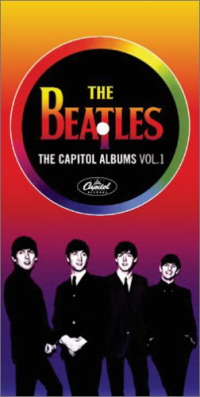 The November 15th, 2006 box set titled “The Capitol Albums, Vol. 1” also featured "Hold Me Tight," both in stereo and "Type B" foldover mono as originally heard on the original "Meet The Beatles!" album. The November 15th, 2006 box set titled “The Capitol Albums, Vol. 1” also featured "Hold Me Tight," both in stereo and "Type B" foldover mono as originally heard on the original "Meet The Beatles!" album.
On September 9th, 2009, the CD box set “The Beatles In Mono” was released which features the newly remastered mono version of "Hold Me Tight." The vinyl edition came out on September 9th, 2014.
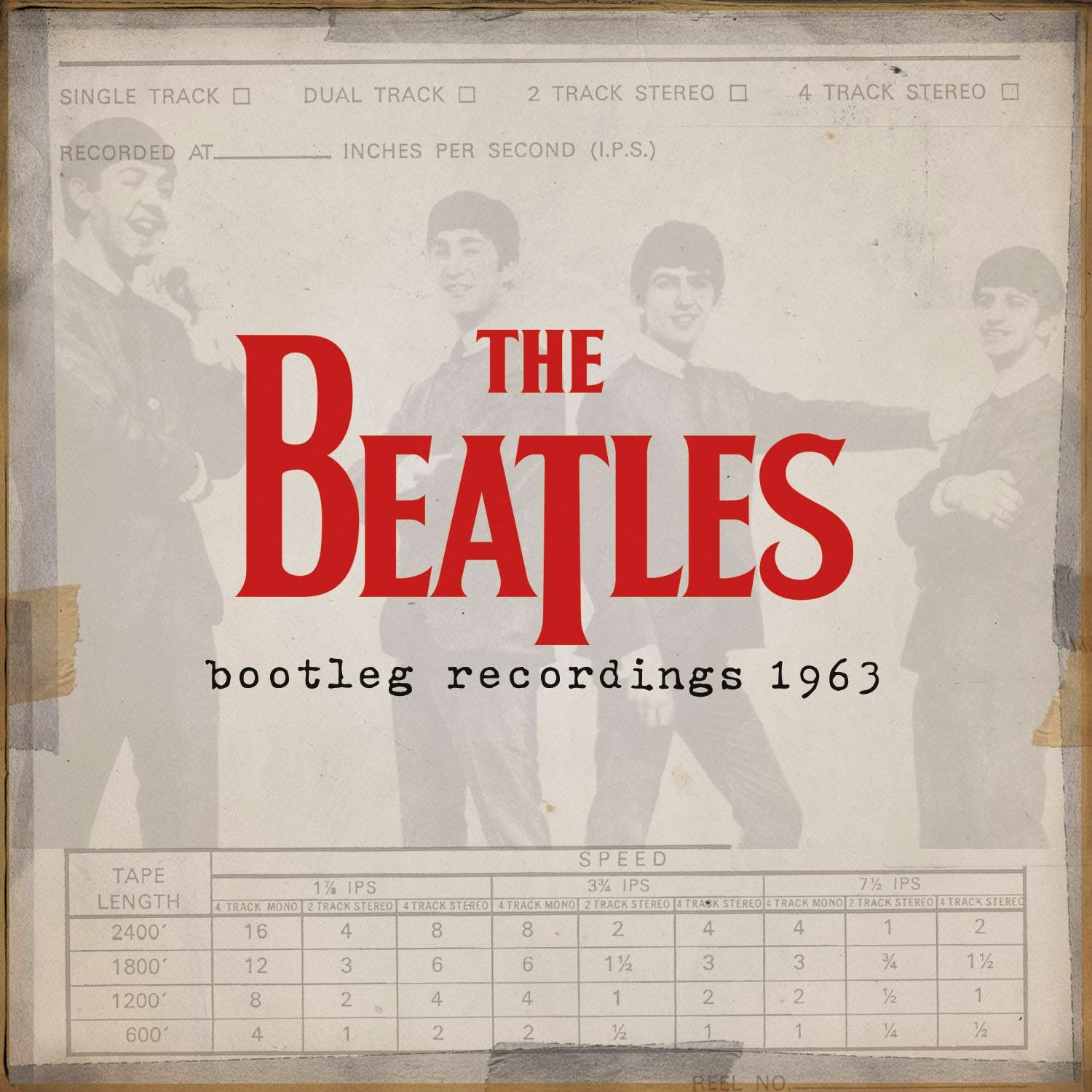 On December 17th, 2013, iTunes released a 59 track compilation album entitled "Bootleg Recordings 1963" only available on their downloading platform, studio take 21 of "Hold Me Tight" from the group's September 12th, 1963 EMI recording session included therein. The purpose of this release was to extend the copyright of these recordings under European Union law from 50 years (which would have expired at the end of 2013) to 70 years (until 2033), this being considered an official release. This compilation album was only available in the US on that date to those in the know for a number of hours for $39.99 in its entirety or to be purchased as individual tracks, but was later made available for purchase as well. On December 17th, 2013, iTunes released a 59 track compilation album entitled "Bootleg Recordings 1963" only available on their downloading platform, studio take 21 of "Hold Me Tight" from the group's September 12th, 1963 EMI recording session included therein. The purpose of this release was to extend the copyright of these recordings under European Union law from 50 years (which would have expired at the end of 2013) to 70 years (until 2033), this being considered an official release. This compilation album was only available in the US on that date to those in the know for a number of hours for $39.99 in its entirety or to be purchased as individual tracks, but was later made available for purchase as well.
Live Performances
 It has been confirmed that the song was included in their set lists from 1961 through 1963 during their Cavern Club and Hamburg performances. Because it was not loved by the band, their 1963 performances of the song were minimal, which led to the song being dropped from their act even before it was released in Britain in November of that year. The song was never performed for any of their BBC recording sessions. It appears that “Hold Me Tight” was quickly forgotten after it was completed at EMI studios. It has been confirmed that the song was included in their set lists from 1961 through 1963 during their Cavern Club and Hamburg performances. Because it was not loved by the band, their 1963 performances of the song were minimal, which led to the song being dropped from their act even before it was released in Britain in November of that year. The song was never performed for any of their BBC recording sessions. It appears that “Hold Me Tight” was quickly forgotten after it was completed at EMI studios.
Conclusion
 For a song that has been given such a "bad rap" over the years, discerning ears can detect a skillful use of songwriting tricks as well as a very impressive studio performance. Its surprising inclusion in the opening segments of the 2007 Academy Award nominated musical “Across The Universe” shows it as an accurate representation of teenage romance and thereby gives the song its due merit. For a song that has been given such a "bad rap" over the years, discerning ears can detect a skillful use of songwriting tricks as well as a very impressive studio performance. Its surprising inclusion in the opening segments of the 2007 Academy Award nominated musical “Across The Universe” shows it as an accurate representation of teenage romance and thereby gives the song its due merit.
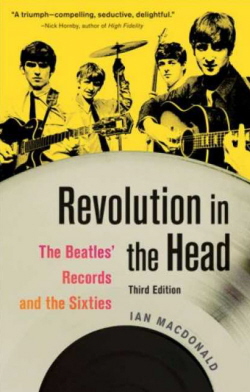 Although the near-spotless reputation of The Beatles continues to escalate towards sainthood without “Hold Me Tight” being recognized for what it was, credit should still be given when due. Author Ian MacDonald, in his book "Revolution In The Head," recommends: "Play it loud with the bass boosted, and you have an overwhelming motoric rocker strongly redolent of the band's live sound." Far from being “aimless and half finished,” as author Ian MacDonald claimed that some critics describe ths song, we see here that The Beatles, McCartney in particular, are flexing their songwriting muscles by concocting an imaginative and tightly woven arrangement early in their career. Well done! Although the near-spotless reputation of The Beatles continues to escalate towards sainthood without “Hold Me Tight” being recognized for what it was, credit should still be given when due. Author Ian MacDonald, in his book "Revolution In The Head," recommends: "Play it loud with the bass boosted, and you have an overwhelming motoric rocker strongly redolent of the band's live sound." Far from being “aimless and half finished,” as author Ian MacDonald claimed that some critics describe ths song, we see here that The Beatles, McCartney in particular, are flexing their songwriting muscles by concocting an imaginative and tightly woven arrangement early in their career. Well done!
Song Summary
“Hold Me Tight”
Written by: John Lennon / Paul McCartney
- Song Written: 1961 through September, 1962
- Song Recorded: September 12, 1963
- First US Release Date: January 20, 1964
- First US Album Release: Capitol #ST-2047 “Meet The Beatles!”
- US Single Release: n/a
- Highest Chart Position: n/a
- British Album Release: Parlophone #PCS 3045 “With The Beatles”
- Length: 2:32
- Key: F major
- Producer: George Martin
- Engineers: Norman Smith, Richard Langham
Instrumentation (most likely):
- Paul McCartney - Lead and Background Vocals, Bass Guitar (1961 Hofner 500/1), Handclaps
- George Harrison – Lead Guitar (Gretsch 6122 Country Gentleman), Background Vocals, Handclaps
- John Lennon – Rhythm Guitar (1958 Rickenbacker 325), Background Vocals, Handclaps
- Ringo Starr – Drums (Ludwig), Handclaps
Written and compiled by David Rybaczewski
|
IF YOU WOULD LIKE TO MAKE A DONATION TO KEEP THIS WEBSITE UP AND RUNNING, PLEASE CLICK BELOW!
Sign Up Below for our MONTHLY BEATLES TRIVIA QUIZ!
|